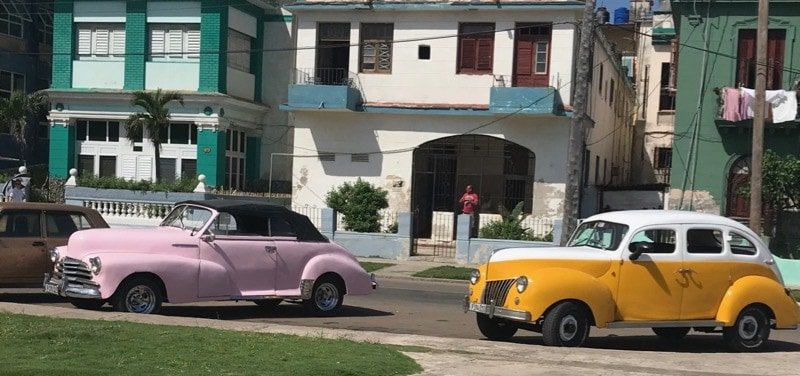Travel to Cuba: Preparing For Your Trip
Whenever you prepare for a trip, there’s an element of the unknown. You can read all the guides and blog posts in the world, but until you go there yourself, you don’t know what will be important to you.
This is one of a series of articles about our trip to Cuba. Click here for a list of all the Cuba-related articles.
Reliable information about preparing for travel to Cuba was challenging to find. I talked with several friends before this trip. I sorted through conflicting information and I cross checked it with recent blog posts. I found a tremendous amount of incorrect information out there, perhaps because Cuba is changing. In the current political climate, rules for US citizens could change again with little notice. This information was correct as of June, 2018.
All the preparation in the world doesn’t prepare you for the details you don’t expect. But isn’t that part of what travel is all about? The seasoned traveler is generally able to navigate through the unexpected, but the weariness of travel and lack of sleep can harpoon anyone’s ability to navigate effectively. When traveling to a country like Cuba, having the right information in advance can make or break your trip.
Here are some things I learned in my preparation for Cuba. We elected to stay in Havana the whole two weeks, so some of my info is specific to Havana.
Can US Citizens Go To Cuba Legally?
There are still a lot of misunderstandings about this. The short answer is YES. While you can’t go for tourism, there is a list of 12 reasons you can go: “support for the Cuban people” is the most common. It’s up to the traveler to select the appropriate category and have an itinerary that supports the category of travel. You will see websites repeatedly insist that you must go with a group licensed for the specific reason you’re going: as of this writing, that is not true.
You can read the US Treasury Department’s update to rules from June 2017 here.
Getting There
US airlines, including American, JetBlue, and Southwest, have daily flights to Cuba. You can get cheap flights on Mexican airlines Volaris and Interjet from Cancún.
For us coming from Guatemala, the cheapest and easiest way to get to Havana was to fly Copa Airlines through Panama. Yes, it was cheaper and much more efficient to go from Guatemala through Panama than to go through Mexico. Schedules change, though, and sometimes the Mexican airlines have great deals.
Our experience with Copa was outstanding! Food (including vegan meals) and drinks were included, the flights were all on time, and the service was friendly.
Required Documents

While a regular visa is required to travel to Cuba from some countries, North American, Latin American, and European travelers just need to get a tourist card visa. Tourist cards are available from some travel agencies, Cuban embassies and consulates, and authorized airlines. We got ours at the Copa gate in Panama, before boarding our flight from Panama to Havana, for $20 each. I’ve heard some travel agencies charge $60 for the card. Copa had absolutely no information about this on their website, but it was super easy: just walk up to the gate, ask for the tourist card and hand them the money.
What Copa did say on their website was that US citizens must complete and affidavit stating their reason for traveling to Cuba. We printed these from the Copa website and completed them before traveling. Nobody ever asked to see it. Maybe they do if you’re flying from the US.
The other required documentation is proof of medical insurance that is valid in Cuba. If you’re a US citizen flying from the US, the airline may include this insurance in the ticket price.
I have an expat medical insurance policy that covers me almost anywhere in the world except the US. Cuba falls into the “almost” category. I ended up getting an inexpensive policy from Patriot Insurance.
Nobody ever asked for proof of insurance. Could I have gone without it? I’ve read that if a US citizen shows up in Cuba without insurance, you’re directed to a table where you can buy it for $4/day. I paid less than that for my policy. Since nobody asked, I suppose I could have skipped it altogether. However, I have been with people on three different trips who had to be hospitalized due to illness or injury while traveling abroad. For one of those people, not having travel medical insurance was a $12,000 mistake. I do not consider it optional.
Where to Stay in Havana
There are two questions you have to ask when planning where to stay in Havana: what part of the city do you want to be in and what type of accommodation do you want.
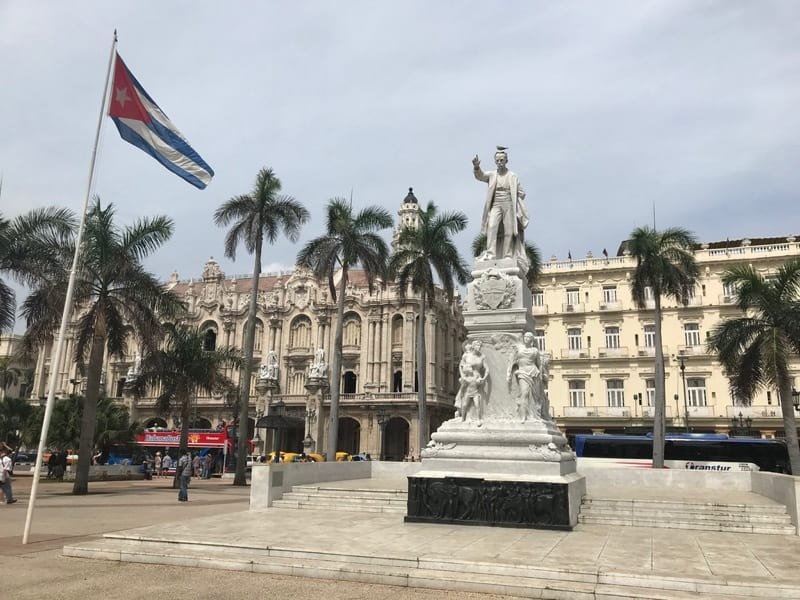
There are four general areas you can consider in Havana:
Havana Vieja – If you want to be in the historic center, you like lots of restaurants and museums nearby, and you don’t mind crowds.
Havana Centro– If you’re more adventurous when it comes to where you stay. It’s crowded, some buildings are crumbling, some parts were seriously high on the funky scale.
Vedado – If you want convenience without the crowds. Vedado has options for a wide range of budgets.
Miramar – If you want a more upscale area and don’t mind traveling further to get to most sites, restaurants, and clubs. Miramar has several large hotels that are often the choice for large groups.
Can you tell I’m biased toward Vedado?
Hotels in Cuba are generally expensive and not very well run according to friends who tried them. US citizens cannot stay in hotels run by the Cuban government.

Everyone I know has stayed in a “casa particular,” which is a room in a private home or a private apartment. Some come with breakfast and the option of other meals. Several friends raved about their casas and formed strong bonds with their host families.
I read a recent blog post by a woman who runs regular trips to Cuba from the US. She said that Airbnb is too new, and she’d heard horror stories from people who had terrible experiences. I also read several accounts from people who didn’t book in advance, but found their casa particular by wandering around—they are clearly identified by a sign like the one pictured here.
Since I’m not a “find it when I get there” type of person, and I’m an Airbnb host, I booked on Airbnb. We couldn’t have been happier. Our host, Michel, was amazingly responsive to every question I asked. He arranged our transportation from the airport and arranged a private day trip to Viñales. The next door neighbor manages the apartment and is there to answer any questions. Michel was available by phone, and came over our first morning to make sure we had what we needed and help us plan where to visit.
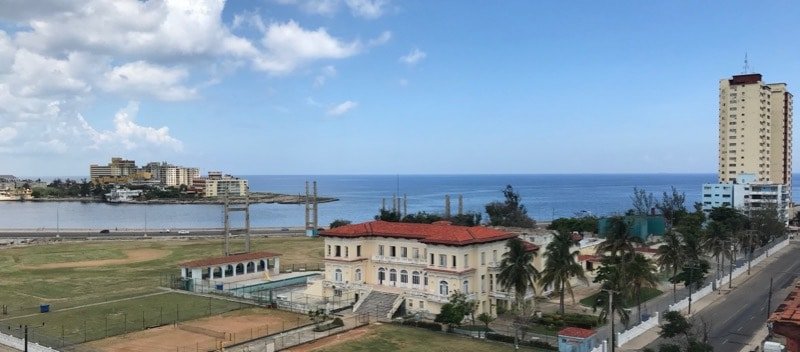
We had a two bedroom apartment with a kitchen, air conditioning in each room, a washing machine, and an ocean view. The location was perfect for us: in Vedado, three blocks from the Malecón, with a supermarket on the corner. It’s near transportation—walk one block and hop on a collectivo to Havana Vieja. We were also about eight blocks in each direction from some great music venues and restaurants (walking distance for us). While this type of lodging may not be right for you, I recommend this apartment without hesitation.
Money
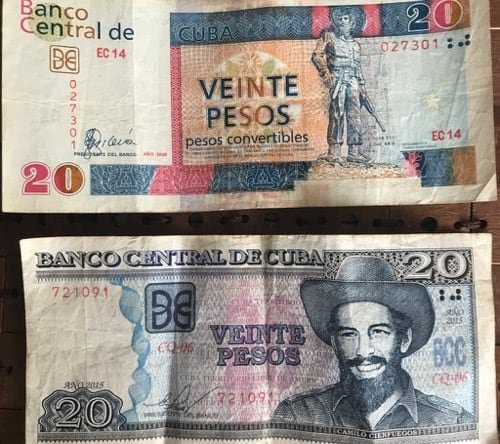
Cuba has two currencies. The Cuban convertible peso, known as the CUC (and pronounced “kook”) was introduced in 1994 as a way to deal with a weak economy and capture remittances that were coming in from other countries. It was intended as a currency for tourists and luxury items, and is pegged 1:1 to the US$. The Cuban Peso or CUP, also known as “moneda nacional” is the currency used by Cubans for everyday expenses and in ”peso” restaurants. The exchange rate is around 25:1. When you go to an ATM or a CADECA (money exchange), you get CUC. At tourist restaurants and stores offering specialized goods, you pay in CUC. Many places list prices in both CUC and CUP. Our corner grocery store had prices in CUC, while the produce market charged in CUP.
It can be quite confusing, and even more so because some vendors and taxi drivers will charge CUC, then try to give you change in CUP. They’ll easily get away it unless you’re really aware. CUC have images of monuments while CUP have images of people—otherwise they look quite similar. CUP coins are bronze colored instead of silver, and have a star on one side.
In 2013, Raul Castro’s government announced that it would be uniting the two currencies, but that still hasn’t happened. According to Alex, our walking tour guide who is an economics professor, reuniting the currencies will have to be done with great care to prevent a collapse of some types of businesses. He believes the dual exchange rate system will be eliminated within a couple years. Here is an excellent article that describes the problems with the system.
When planning your money to bring to spend, keep the following in mind:
- Bring money to exchange at the CADECA at the airport. The ATMs (cajero automático) at the airport may have long lines.
- Exchange of US $ will cost a 10% surcharge. It is the only currency subject to this charge. You’re better off bringing Euros, Canadian dollars, or even Mexican pesos.
- US debit and credit cards WILL NOT WORK in Cuba. We used our Guatemalan debit cards with no problem. As with any time you travel, be sure to inform your bank of your travel plans in advance.
We’ve been told that the ATMs in fancy hotels, while considered more secure, have much higher fees. We used the ATMs at Banco Metropolitano with no problems. You’ll find these ATMs in several locations around the city, and they’re often marked on the MAPS.ME map (more about that below). You may have to try more than one ATM—the first one we tried didn’t work, but we got cash from the next one. It’s common to have a bank of five ATMs together, so you’re not running around to find one that works.
What to Bring
My former mother-in-law always told us “bring less clothes and more money than you think you need,” That certainly applies to Cuba.
We decided not to check any luggage, even though we were traveling for two weeks. The internet is full of stories about people who had their luggage rifled-through and items stolen before it got to them in the José Martí airport. Potential theft didn’t enter into our decision: we just wanted to travel light. As we walked past all those people waiting at baggage claim, we were quite happy with our decision.
We visited in June, the beginning of the hot season (is there really a not-hot season?). We sweated through at least two sets of clothes each day. We knew that would happen, so we booked an apartment with a washing machine. We averaged a load of laundry every other day (it was a small machine, but still!)
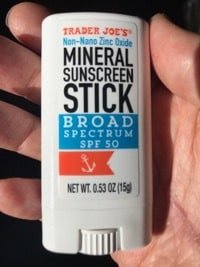
Make sure you bring your own sunscreen! We didn’t see it for sale anywhere. I brought a small mineral sunscreen stick, which slipped easily into my bag. It worked great!
Bring a small first aid kit, including your favorite pain reliever, some bandages, and any supplements or medications you rely on.
Your favorite snacks will come in handy. You won’t see much selection in Cuban stores unless you like packaged cookies and white-flour crackers. We brought several bags of nuts and some high quality chocolate bars and were happy we did.
If you’ll be cooking or just want to spice up your food, bring some seasoning. We brought a bottle of Tajin, and I wished I had some cumin to season my beans. Cuban food is notoriously bland, and seasonings aren’t easily available. I was thrilled when I went into a supermarket and saw three rows of spice jars. It turned out to be three rows of cinnamon and dried tomatillo—that was it. Also, there’s no non-dairy milk in Cuba, so if you must have it, bring your own.
The sun can be brutal. Many Cuban women carry their shade with them by using an umbrella as a parasol. It took me a while to follow their lead, but it really makes sense.
Download the MAPS.ME App!!
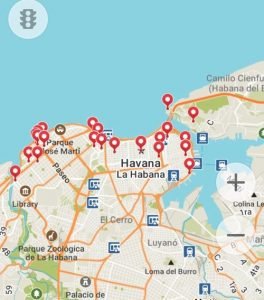
Before you leave your convenient WiFi, download the MAPS.ME app and the map of Cuba. Our Airbnb host recommended MAPS.ME as the best map to use in Cuba. We found this app to be essential, as you don’t need internet access to use it. It shows you where you are based on your GPS coordinates, and is extremely accurate. You can mark locations you want to visit and see where you are in relation to your landmarks.
More than once we explored random streets and didn’t know where we were. When you open this app, it shows you exactly where you are. Without internet.
MAPS.ME is available for iOS and Android.
Did I mention you don’t need internet?
Internet
While big hotels offer WiFi, don’t expect to have WiFi in restaurants and homes (although this is changing and some casas particulares now have WiFi).
All WiFi is through the state-run ETECSA system. You buy a card that gives you a login. You have to be in a hotspot to log in, and there are Wifi parks all around the city. The standard card is 1 hour for 1 CUC, though you can buy 2 CUC cards. In tourist areas, the lines to buy the cards at official outlets can be quite long, and it’s not uncommon to find them sold by individuals in the parks for 2 or 3 CUC.
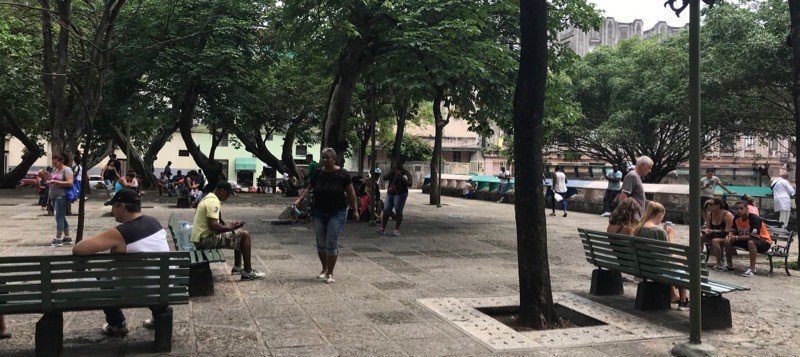
I planned to not have internet after hearing how slow it was. When I bought my first card, in a park in Centro Havana, internet was so slow that I gave up. The next day I logged in at the park near the Meliá Cohiba hotel, and was pleasantly surprised by the speed. I was able to check messages, respond to important items, and log out in 15 minutes.
Honestly, it was great for me to take a break from always being online.
What About Hustlers and Scams?
Anywhere you have poverty, you have people trying to make money any way they can. I read all kinds of warnings about people who would try to scam us. The only scam we experienced was a taxi driver who agreed to a price of 8 CUC. When we paid with a 10, he tried to give us 20 CUP in return. We found it best to get small bills or coins and pay with exact change when possible.
An Ocean of Inaccurate Advice
During my research, I read an incredible amount of inaccurate advice about going to Cuba. Here is some of what we heard compared with what we experienced.
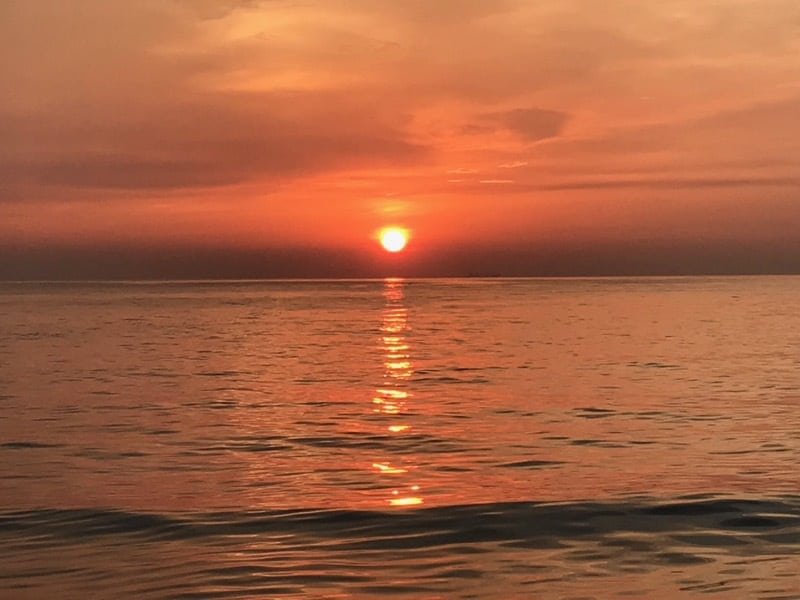
My favorite ridiculous advice? I read a blog post from a guy who said a favorite scam was asking anyone with a watch what time it is. I never quite understood how asking the time turned into a scam, but his advice was to never wear a watch in Havana. Stupid.
Everyone’s experience will be different. As in any tourist destination, pay attention, think about where you are, and don’t be stupid. There’s a lot of poverty, but overall Havana is pretty safe. We regularly walked back to our apartment late at night, but you wouldn’t catch me doing that in some neighborhoods.
Here’s a summary of things we were told that turned out to be untrue or partially true.
What we heard:
There are no ATMs in Cuba / the ATMs don’t work / there are always long lines
Our experience:
The line at the ATM inside the arrivals area at the airport had a long line. I later found out that there’s another set of ATMs outside. Besides that, there are ATMs all over, but especially in Havana Vieja. We used an ATM within walking distance of our apartment. We had to try a couple machines because the first one was out of money, but otherwise it was quick and easy.
Remember that US debit and credit cards can’t be used in Cuba. We used debit cards from our Guatemalan banks.
What we heard:
There are often food shortages / restaurants with no food / empty shelves in stores
Our experience:
Our corner grocery store had an odd assortment of items, and more than once something we bought was never seen again. Some of the shelves were thinly stocked with some items and had huge quantities of other items. We never experienced a restaurant not having items on the menu, but we ate in private restaurants.
Produce is sold in mercados agropecuarios. Depending on where you are, selection may be extremely limited.
The one item that was never is short supply in any market was rum. Havana Club rum has a larger percentage of shelf space than any other single item.
What we heard:
It will be impossible to stay vegan in Cuba.
Our experience:
It may not be easy, but it’s certainly possible. See my post on food and restaurants for more information.
What we heard:
You have to wait in line for everything.
Our experience:
The only places I regularly saw lines were:
- Money exchange places (CADECAs)
- Official internet card sellers in Havana Vieja (though you can buy cards in a number of other places)
- Every I’ve cream shop. Well, almost every one. La Coppelia is famous for long lines, but the ice cream shop on the corner of our block had lines every day.
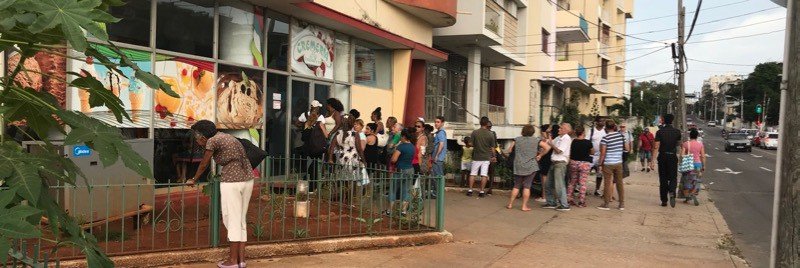
What we heard:
Internet is so slow, it’s unusable.
Our experience:
It depends where you are. My first attempt to use internet, in Centro Havana, was horribly slow. The rest of the time it was quite speedy.
What we heard:
Scammers are everywhere.
Our experience:
Vendors and especially taxi drivers will try to scam you by giving you CUP instead of CUC as change. Having exact change was our best defense.
What we heard:
All Cuban coffee is strong and sweet.
Our experience:
Cubans like their coffee strong and sweet, but that’s not the only option. Our apartment came with a fantastic electric espresso maker, and we could always ask for cafe Americano when getting coffee out. The coffee was never served sweetened, though we did have to look carefully at the bags of ground coffee in the grocery store, as they sell it roasted with sugar.
Random Things We Didn’t Expect
In spite of all the advice and preparation, we saw plenty that we didn’t expect to see. Some of these were simple aspects of daily life in Havana. Here are a few that caught our attention.
Pretty much everyone smokes cigarettes. You’d think a country with socialized medicine would attempt to minimize a significant cause of disease. I guess a country that grows and exports tobacco doesn’t think that way.
Black fishnet stockings. Women were wearing them everywhere in spite of the hot, humid weather. I did not see that coming.
The stop lights at most intersections are the most intelligent I’ve seen. Not only do they count down until the light changes, many have a separate counter for pedestrians.
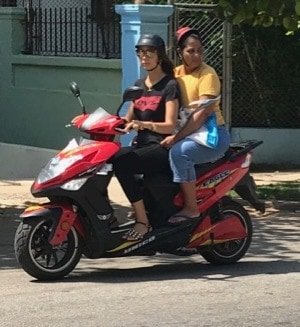
Motorcycles and scooters are everywhere. That’s not unusual, but we were surprised by the number motorcycles with sidecars and the number of electric scooters.
The electric scooters were the only thing besides musical talent that I envied during our time in Havana.
Oh, and almost every motorcycle and scooter was parked using the center stand instead of the kickstand. And most people wear these silly little helmets (there is a helmet law).
**Warning: unsettling and graphic content ahead!**
A ritual sacrifice on a central Havana street corner. We heard the drums first. A crowd was gathered around, while a dog was butchered in front of us. The remains of another dog were left in a plastic bag on the next corner.
We saw this sacrifice during our walking tour. Our guide explained that it’s a common practice in central Havana among practitioners of Afro-Cuban religions. It took me a while to even process what I was seeing, and those images are burned into my brain. No, I did not take photos.
**End of unsettling and graphic content.**
This is one of a series of articles about our trip to Cuba. Click here for a list of all the Cuba-related articles.
Share this post!

